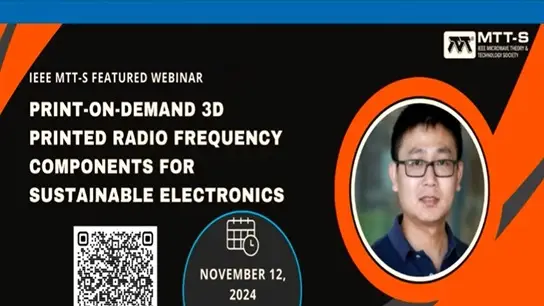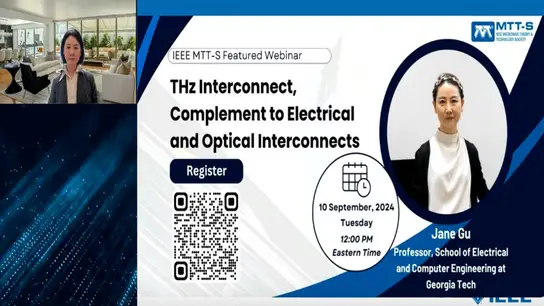Terahertz Systems in Silicon: Overcoming Device Level Limitations for System Level Functionalities Slides
Kaushik Sengupta
-
Members: FreeMTT
IEEE Members: $9.00
Non-members: $14.00Pages/Slides: 66
19 Nov 2019
The last decade has seen tremendous advances in terahertz (THz) science and technology across a wide range of substrates from solid-state and photonic devices to 2D and nano-materials. In spite of the progress, the field can greatly benefit from low-cost, integrated, room-temperature technology that can potentially bring transformative changes for a wide range of applications in sensing, imaging and communications, not currently accessible due to cost, size and power limitations. Silicon-based integrated circuit technology with its extremely high levels of integration provides a potential platform, but conventional design methodologies need to be re-explored for efficient THz chip-scale systems. This search is partially facilitated by two important factors that have opened up a new paradigm and design space.
Firstly, device scaling has pushed cut-off frequencies of silicon-based integrated devices to reach sub-THz and THz frequencies. This has allowed us to generate, process and receive THz signals in a substrate that supports integration of a billion active devices. Simultaneously, at these frequencies, the chip dimension has become several times larger than the wavelength, which theoretically allows efficient radiating properties of integrated electromagnetic (EM) interfaces. These together have created a unique opportunity for fundamentally different architectures, methodologies and a new class of active, reconfigurable multi-functional THz EM structures for signal generation and reception that can enable fully integrated, high-performance THz systems-on-chip.
In this webinar, I will highlight some of the seminal advances in THz chip-scale systems in silicon in the last decade, challenges ahead and comment on future opportunities and applications for integrated THz systems.
Firstly, device scaling has pushed cut-off frequencies of silicon-based integrated devices to reach sub-THz and THz frequencies. This has allowed us to generate, process and receive THz signals in a substrate that supports integration of a billion active devices. Simultaneously, at these frequencies, the chip dimension has become several times larger than the wavelength, which theoretically allows efficient radiating properties of integrated electromagnetic (EM) interfaces. These together have created a unique opportunity for fundamentally different architectures, methodologies and a new class of active, reconfigurable multi-functional THz EM structures for signal generation and reception that can enable fully integrated, high-performance THz systems-on-chip.
In this webinar, I will highlight some of the seminal advances in THz chip-scale systems in silicon in the last decade, challenges ahead and comment on future opportunities and applications for integrated THz systems.


